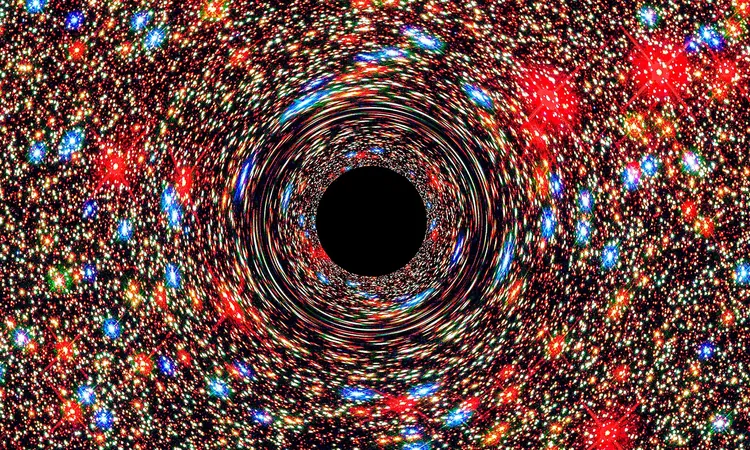
Unlocking the Mysteries of Black Holes: The Revolutionary Concept of Supermazes
2025-04-10
Author: Ming
Exploring Black Holes Like Never Before
Imagine a groundbreaking approach to understanding black holes: physicists are now proposing a concept called "supermazes." These intricate theoretical structures offer a fresh perspective on the microscopic complexities of black holes—objects renowned for their enigmatic nature.
Moving Beyond Traditional Theories
Historically, black holes have been understood through the lens of general relativity, which portrays them as dense masses shrouded by an event horizon—an area from which nothing can escape, not even light. Yet, this view falls short when it comes to integrating the principles of quantum mechanics, which argue that black holes must possess a rich internal microstructure to account for the vast information they contain.
Nicholas Warner, co-author of the study and a professor at USC Dornsife, explains, "General relativity is great for larger structures but fails to capture the intricate details of black-hole microstructure." Supermazes aim to bridge this gap, utilizing string theory and M-theory to construct a detailed landscape of black holes that adds layers of understanding.
Redefining Black Holes: From Fuzzballs to Supermazes
Previous concepts in string theory introduced the idea of "fuzzballs," which act as detailed alternatives to classical black holes. Rather than appearing as smooth, featureless horizons, fuzzballs are envisioned as intricate formations of branes isolated in higher-dimensional spaces. This latest research elevates that idea, enhancing our understanding of black holes as interlocking brane structures.
Warner notes, "We conceptualize the maze as a template for encoding all information related to the formation of the black hole or objects that have fallen into it." This means that supermazes provide a blueprint for how branes interact, recreating the characteristics of black holes while revealing an astounding level of internal detail.
The Mathematics Behind Supermazes
At the core of this new concept lies a mathematical tool known as the "maze function," which adheres to a complex nonlinear differential equation reminiscent of the notorious Monge-Ampère equation. This equation plays a critical role in defining how branes can intertwine, leading to configurations that mimic the properties of black holes without sacrificing the microstructure needed by quantum theories.
Warner describes the maze function as akin to a "billion-pixel camera" that provides a rich, nuanced picture of black holes, far surpassing the limited perspective afforded by classical theories.
A Quantum Leap Forward for Physics
Supermazes represent not just a significant advancement in black hole theory, but also pave the way for future explorations into various cosmic phenomena. The team sees this research as the foundation of larger concepts intended to tackle unresolved challenges like the black hole information paradox and the dynamics of gravitational wave generation.
Ultimately, the implications of supermazes could steer new experimental and observational strategies in the realms of gravitational wave astronomy and high-energy physics. By enriching our understanding of black holes, supermazes hold the potential to reshape our grasp of the universe's most mysterious objects, taking us closer to a unified theory that deciphers the conundrums of quantum gravity.
The Journey Continues
As scientific inquiry into the maze function and supermazes advances, researchers may unveil new intricacies that govern the fabric of spacetime itself. This fresh perspective not only reveals a captivating blueprint of black holes but may also inspire the next generation of discovery in the cosmos.

 Brasil (PT)
Brasil (PT)
 Canada (EN)
Canada (EN)
 Chile (ES)
Chile (ES)
 Česko (CS)
Česko (CS)
 대한민국 (KO)
대한민국 (KO)
 España (ES)
España (ES)
 France (FR)
France (FR)
 Hong Kong (EN)
Hong Kong (EN)
 Italia (IT)
Italia (IT)
 日本 (JA)
日本 (JA)
 Magyarország (HU)
Magyarország (HU)
 Norge (NO)
Norge (NO)
 Polska (PL)
Polska (PL)
 Schweiz (DE)
Schweiz (DE)
 Singapore (EN)
Singapore (EN)
 Sverige (SV)
Sverige (SV)
 Suomi (FI)
Suomi (FI)
 Türkiye (TR)
Türkiye (TR)
 الإمارات العربية المتحدة (AR)
الإمارات العربية المتحدة (AR)